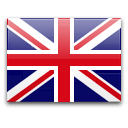Let's dive into the amazing world of our body's support system, the muscular-skeletal system. Comprising bones, muscles, cartilage, tendons, and ligaments, this system is like a complex set of pulleys and levers and orchestrates a delicate dance of balance and opposition to generate the motive power that propels us forward.
1. Components of the Muscular-Skeletal System
The muscular-skeletal system is simply a series of pulleys, levers, and cables that work in balanced opposition to each other to generate motive power. It is made up of bones, muscles, cartilage, tendons, and ligaments.
- Tendons connect muscles to bones
- Ligaments connect bone to bone across or over a joint.
- Cartilage provides a smooth surface for bones to slide on and acts as padding.
There are 206 bones in the human body. They provide the frame for our skin and produce blood and essential blood cells. Some bones have a protective function (skull), some have a supporting function (pelvis), while others are for movement (fingers).
NOTE: Suspected fractures of the pelvis, femur, spine, and skull should cause the rescuer to have a high index of suspicion for life-threatening injuries.

2. The Spine and Vertebral System
The major function of the spine and vertebral column (backbone) is protection of the spinal cord. It also provides support for the body, transmits body weight, and attachment for the pectoral and pelvic girdles and many muscles.
2.1. The Different Parts of the Spine
The spine has three natural curves that make an S-shape. These curves absorb shocks to the body and protect the spine from injury. Five different parts make up the spine:
- Vertebrae: The spine has 33 stacked vertebrae (small bones) that form the spinal canal. The spinal canal is a tunnel that shelters the spinal cord and nerves, protecting them from injury. Most vertebrae move to provide a range of motion. The lowest vertebrae (sacrum and coccyx) are fused and don’t move.
- Facet joints: These spinal joints have cartilage (a slippery connective tissue) that allows vertebrae to slide against each other. Facet joints permit to twist and turn the upper body while also providing flexibility and stability. These joints can develop arthritis, resulting in back or neck pain.
- Intervertebral disks: These flat, round cushions sit between the vertebrae and act as shock absorbers for the spine. Each disk has a soft, gel-like in the center (the nucleus’ gel) and is surrounded by a flexible outer ring (the annulus). The intervertebral disks are constantly under pressure. A herniated disk can tear, allowing some of the nucleus’ gel substance to leak out and cause pain.
- Spinal cord and nerves: The spinal cord is a network of nerves that runs through the spinal canal. The cord extends from the skull to the lower back. Thirty-one pairs of nerves emerge from vertebral openings (the neural foramen). These nerves carry messages between the brain and the body.
- Soft tissues: Ligaments connect the vertebrae to hold the spine in position. Muscles support the back and help you move. Tendons connect muscles to bone and aid movement.
2.2. The Spine Segments
The 33 vertebrae make up five distinct spine segments. Starting at the neck and going down toward your buttocks (rear end), these segments include:
- Cervical (neck): The cervical part of the spine has seven vertebrae (C1 to C7). These neck vertebrae allow to turn, tilt and nod the head.
- Thoracic (middle back): The chest or thoracic part of the spine is made up of 12 vertebrae (T1 to T12). The ribs attach to the thoracic spine.
- Lumbar (lower back): Five vertebrae (L1 to L5) make up the lower part of the spine. The lumbar spine supports the upper parts of the spine. It connects to the pelvis and bears most of the body’s weight, as well as the stress of lifting and carrying items. Many back problems occur in the lumbar spine.
- Sacrum: This triangle-shaped bone connects to the hips. The five sacral vertebrae (S1 to S5) fuse and don’t move.
- Coccyx (tailbone): Four fused vertebrae make up this small piece of bone found at the bottom of the spine. Pelvic floor muscles and ligaments attach to the coccyx.
Conclusion
We recognize here the indispensable role played by the spine and vertebral system. This intricate network of vertebrae, joints, disks, and soft tissues not only supports our bodies but also safeguards the vital spinal cord.
Whether it's the graceful turns of the cervical vertebrae or the weight-bearing lumbar spine, each segment plays a crucial part in our body's biomechanics.



